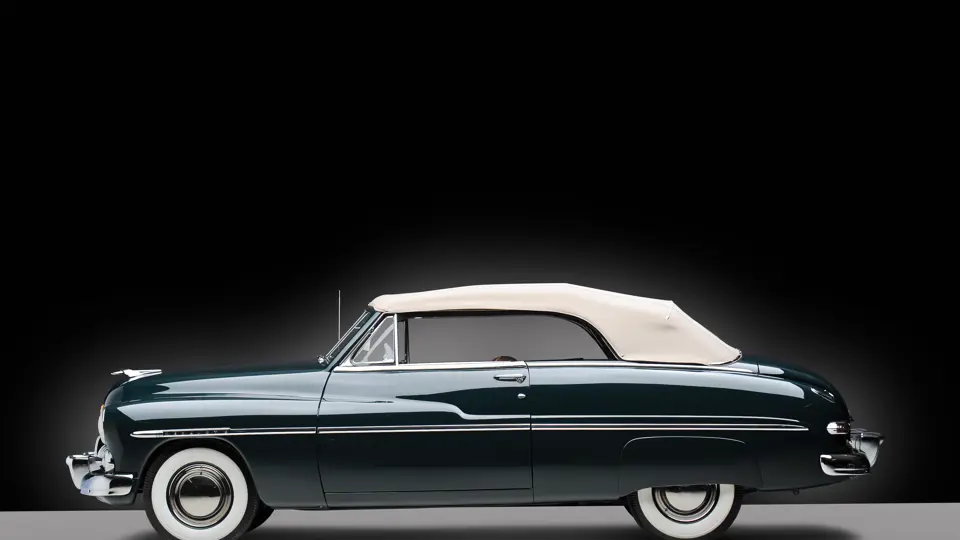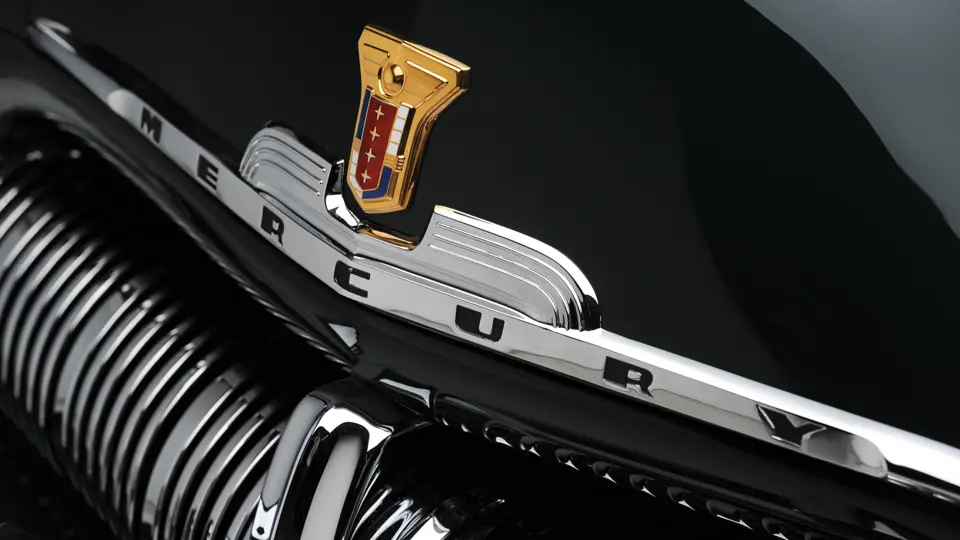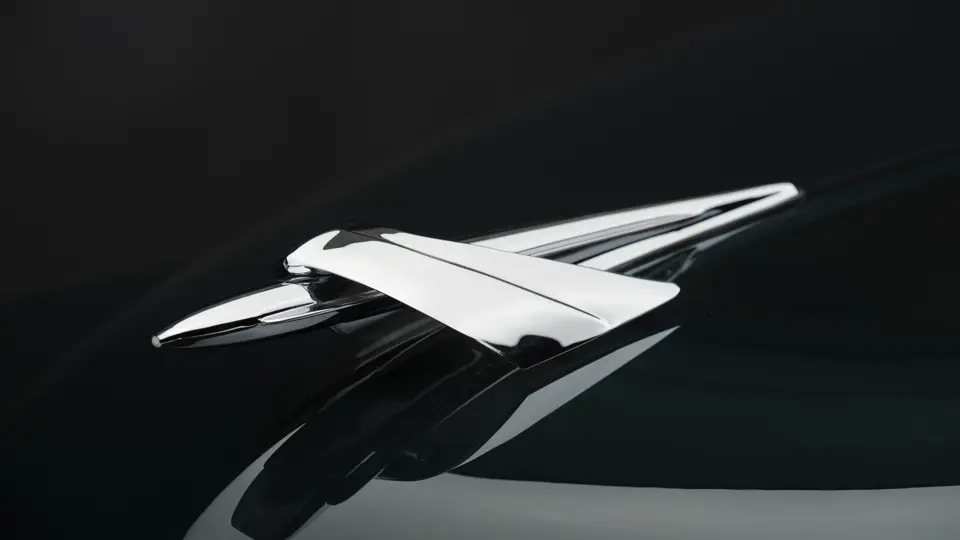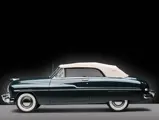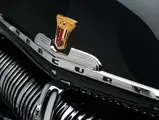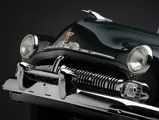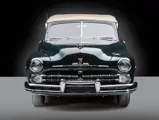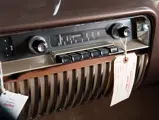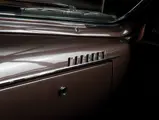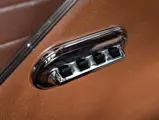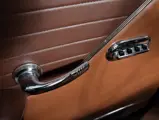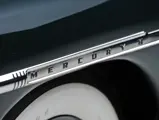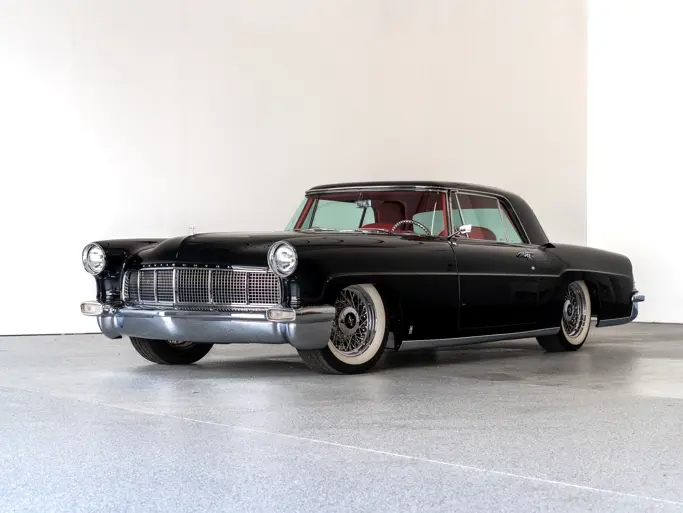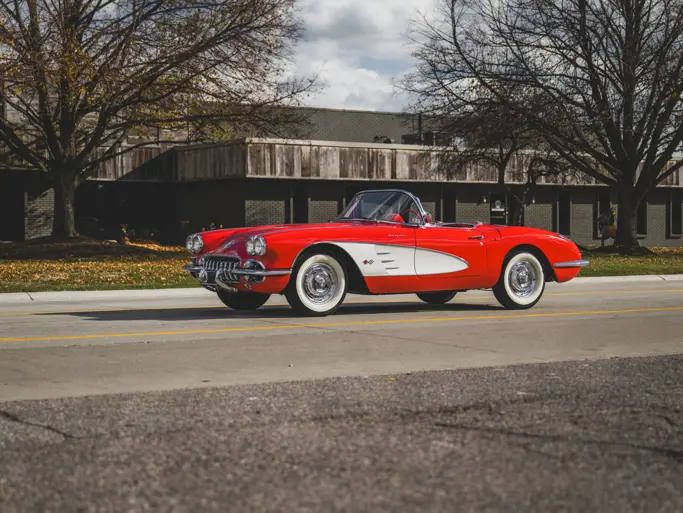MODEL 0CM, 110 bhp, 255.4 cu. in. L-head V-8 engine, three-speed manual transmission, coil spring independent front suspension, live rear axle with semi-elliptic leaf springs, and four-wheel hydraulic drum brakes. Wheelbase: 118"
Mercury for 1950 comprised a freshening of the well-received 1949 model. While the all-new 1949 Fords had been designed by a team headed by outside consultant George Walker, a competing proposal had come from the in-house studio of E.T. “Bob” Gregorie. Gregorie had penned a family of three similar cars in three different sizes: Ford, Mercury, and Lincoln. When Walker’s design was chosen for the low-priced car, Gregorie’s triumvirate was bumped up a notch to become Mercury, Lincoln, and Lincoln Cosmopolitan, respectively.
A much larger-looking car than the Ford, the new Mercury actually preserved its former 118-inch wheelbase. A stepped sculpture line ran from the front fenders, across the doors, back along the rear quarter, and dipped down to the bumper.
As in the past, there was but a single series of Mercury. While Mercury shared Ford’s new independent front suspension and open drive line, it departed from the common engine program of 1946–1948 and received a larger, 255-cubic inch version of the Flathead V-8. The new car, introduced in April 1948, was well received. Model year sales expanded six-fold from 1948, aided in part by a longer model year. In all, more than 300,000 were sold.
For 1950, Mercury got a revised grille, push-button door handles, and a new dashboard, and improvements were made to the carburetor, parking brake, and steering. Horsepower, however, remained the same.
This 1950 Mercury Convertible was purchased from Harold Via of Free Union, Virginia, in February 2008. Mr. Via had acquired it in the 1960s, after reading a newspaper ad for a “low-mileage 1950 Mercury convertible.” At that time, it was completely original, and the paint, upholstery, and mechanical systems were in such excellent condition that the car was shown frequently through the 1970s. After Mr. Dingman purchased the car, following four decades of single ownership, he drove it during the following spring and summer. It was then sent to Kevin Westmorland’s Performance Restoration in Georgia for a body-off, nut-and-bolt restoration, the cost of which was approximately $150,000.
The result is spectacular. Painted Roanoke Green, the finish shows no flaws, and all brightwork is exemplary. The car has a tan canvas top with matching piping, and there is a matching boot cover in the trunk. Seats are upholstered in brown leather with tan piping, and brown carpet lines the floor, front and rear. Accessories include an AM radio, power windows, a Borg electric clock, and rear fender skirts.
The engine compartment is carefully and correctly detailed, the 8CM engine painted in the correct green. All components are of the appropriate type and part number. The undercarriage is as new, the car having been driven very few miles since restoration. The tires are wide whitewall Firestone Deluxe Champions, in the correct 7.10x15 size.
The 1949 to 1951 Mercurys have a special place in cultural history. A favorite of customizers, the cars achieved iconic status in the 1955 film Rebel Without a Cause, in which the legendary James Dean drove a mild-custom 1949 Mercury coupe. They are remembered fondly today by both custom and antique automobile aficionados. This car is accompanied by an extensive history file.

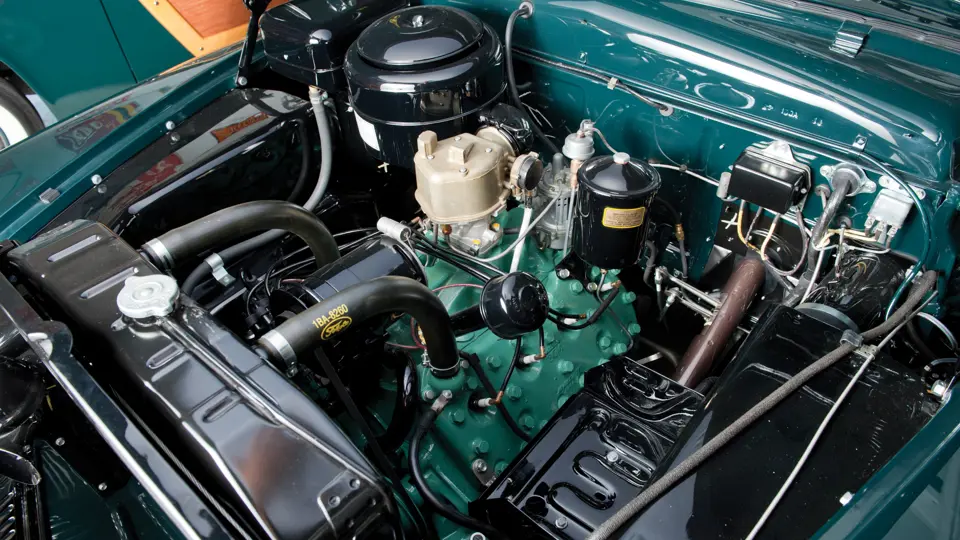


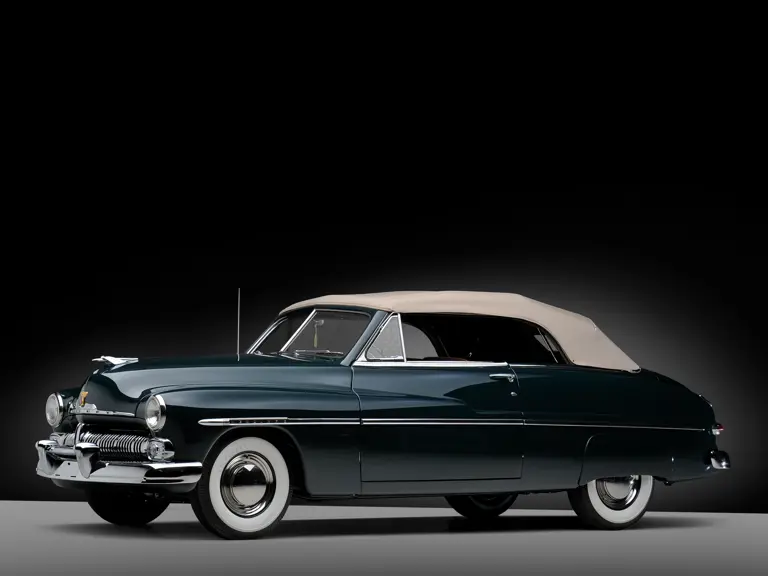
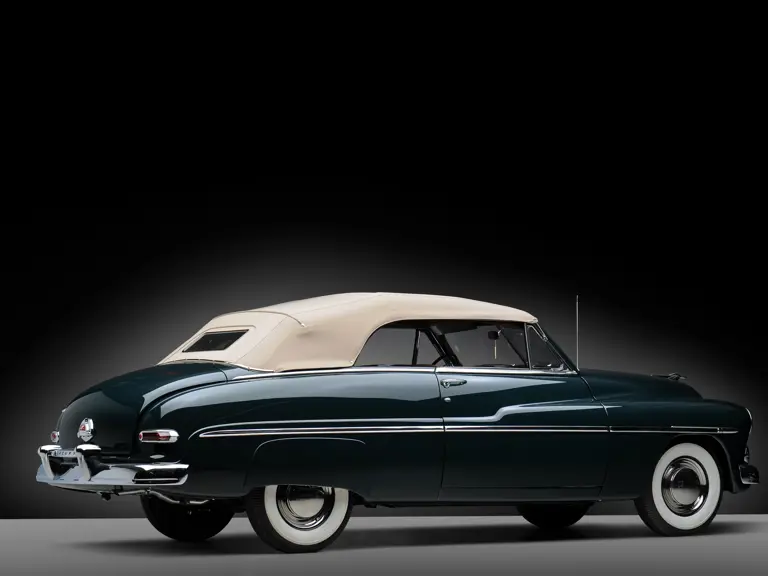
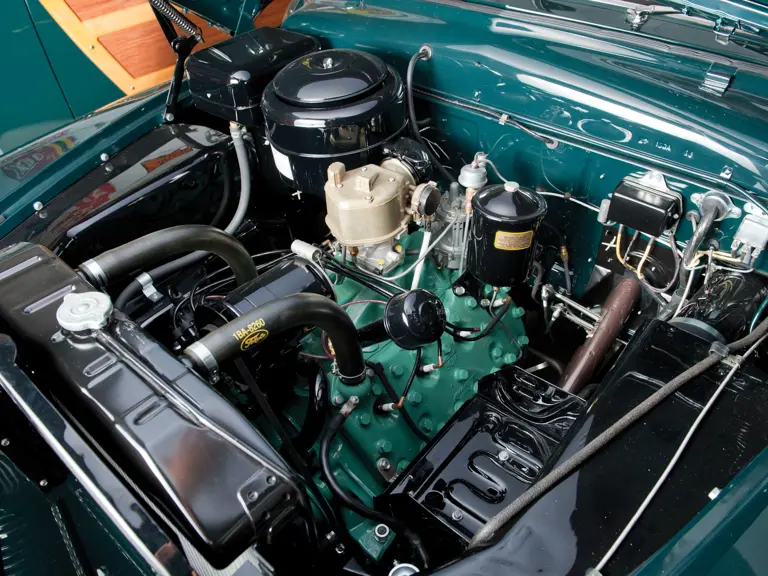
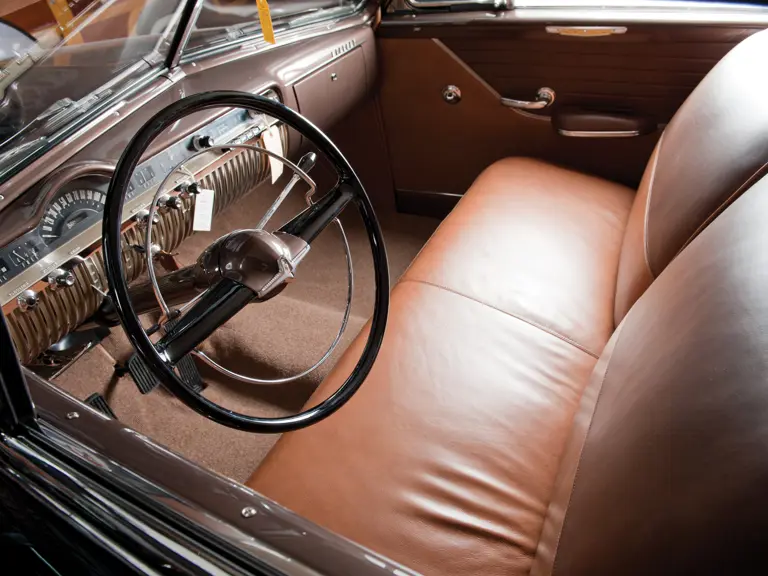
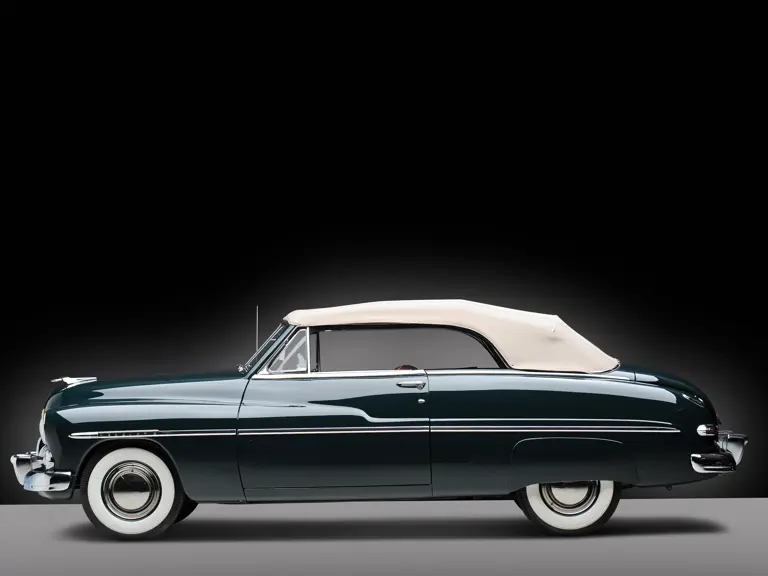
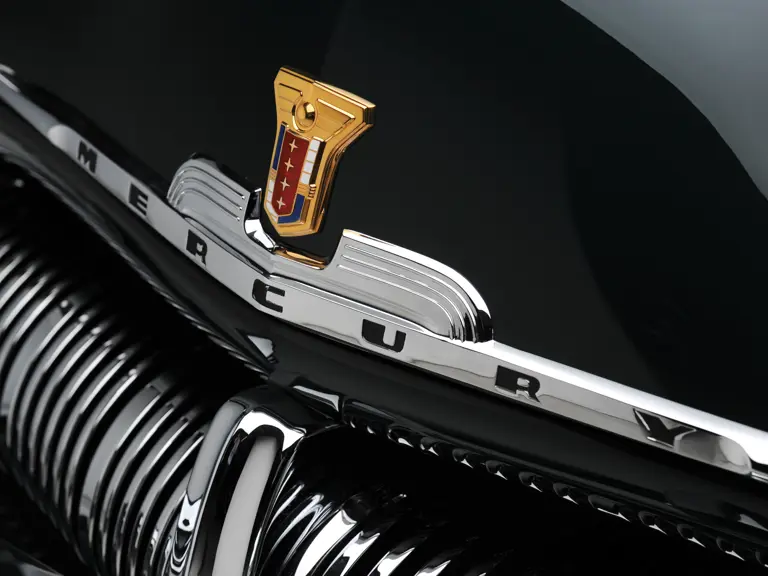
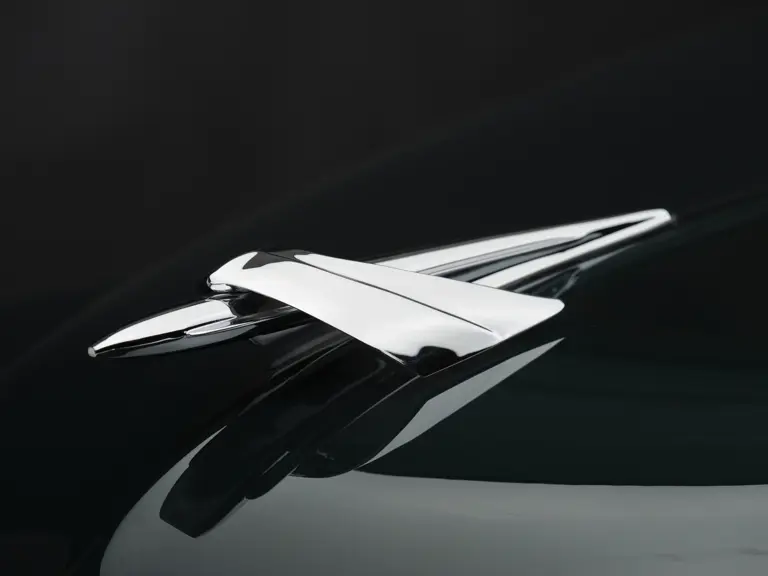
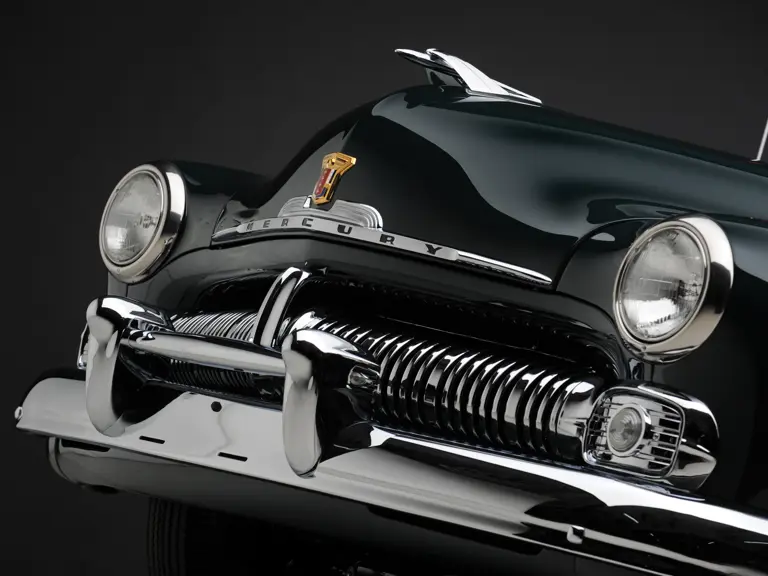


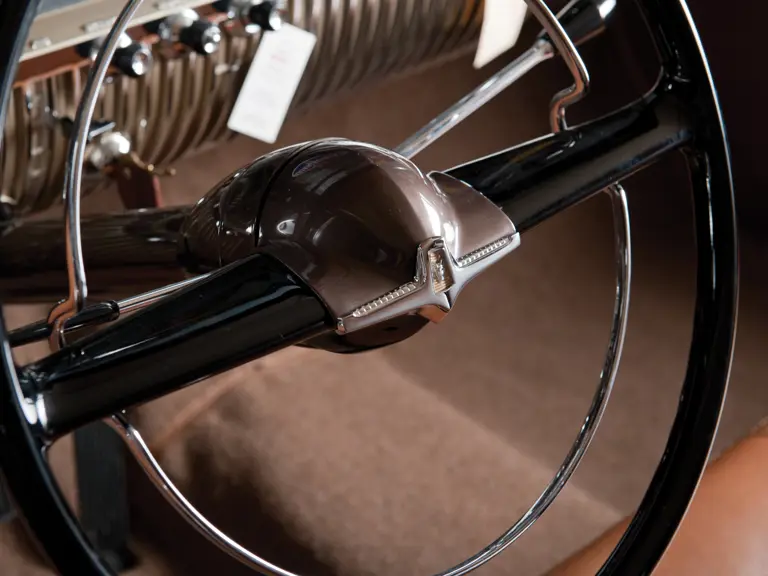

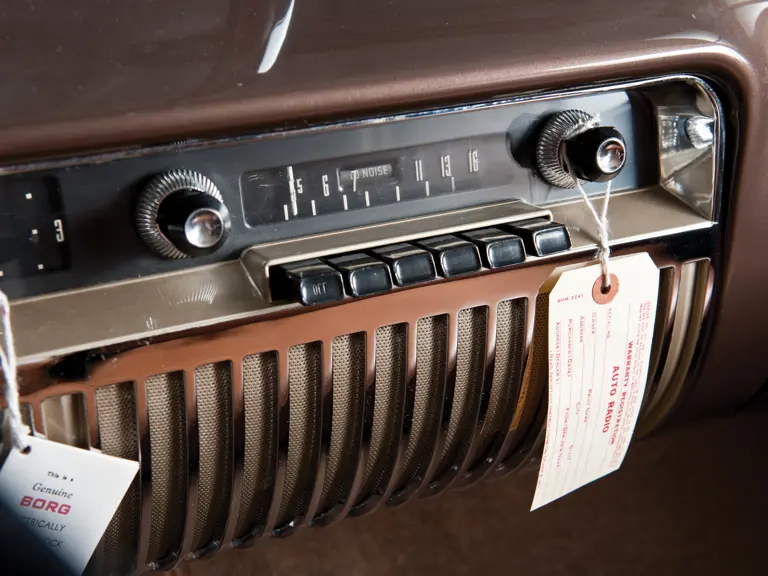
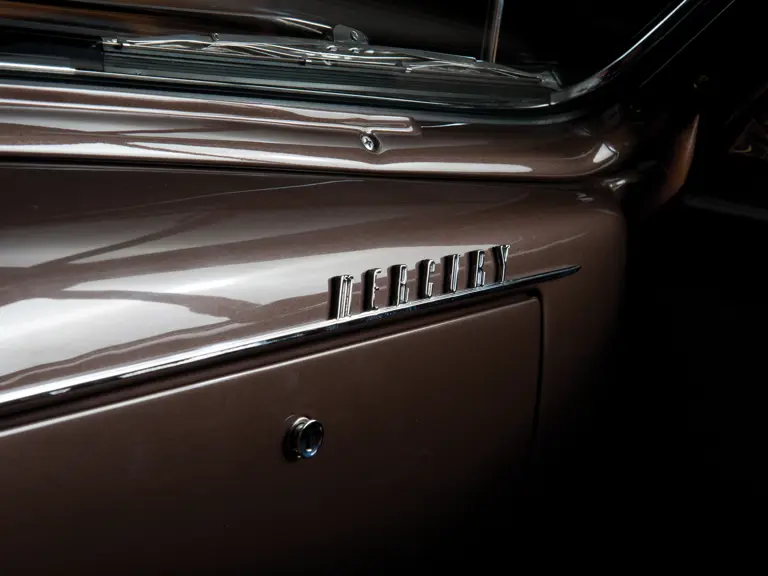
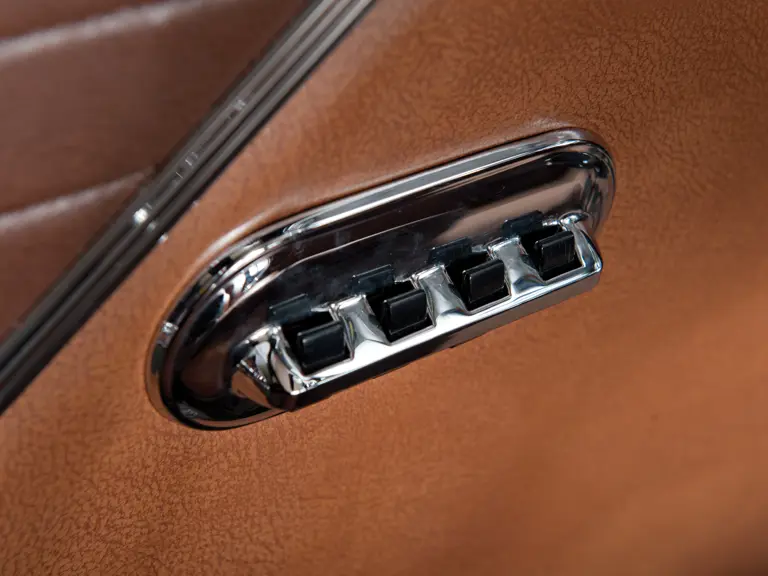

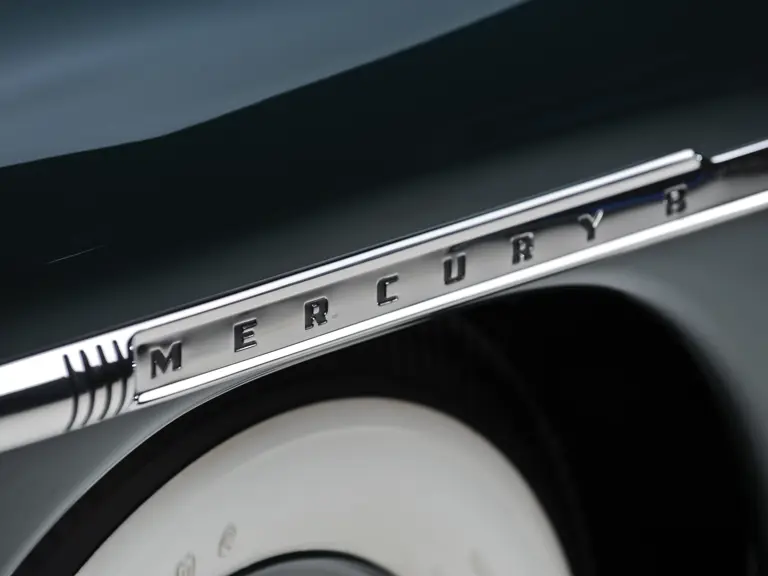
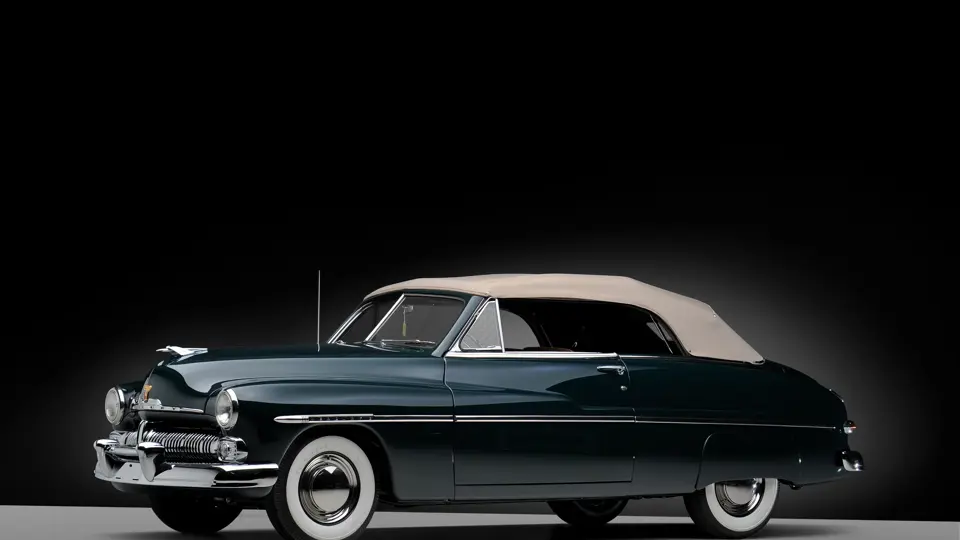
 | Hampton, New Hampshire
| Hampton, New Hampshire
